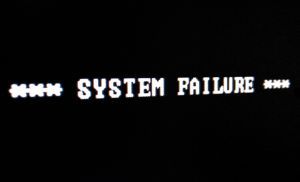What happens if a bank fails in New Zealand?
If your bank failed tomorrow, what would happen? Who knows is the current answer. If it was a small bank the government may leave it to the statutory managers and so depositors might get wiped out completely if the bank was devoid of assets. But, if it was one of the big four Aussie owned banks the government might well step in and bail it out to avoid the major flow on effects to the rest of the economy, not to mention the backlash from a sizeable portion of the populace who would be deposit holders.
So will this change when the Reserve Bank implements it’s Open Bank Resolution (OBR) policy next year?
The short answer is it’s not really clear.
But, in case you haven’t read about the OBR before though, let’s start from the beginning with a bit of background.
What is the Open Bank Resolution?
In simple terms it means a potential “haircut” for deposit holders of a failed bank.
There isn’t currently a government guarantee of bank deposits in New Zealand. As we’ve written about previously (Bank failures could they happen in NZ: The Reserve Bank thinks so) and unbeknownst to most kiwis the hastily set-up bank guarantee of 2008 expired in October 2010.


Under the planned OBR, banks with over $1 Billion in retail customer deposits will be required to set up their computer systems so the RBNZ can, at the flick of a switch, freeze a portion of the banks funds and then reopen the next day. This way the statutory manager of the failed (or distressed as the RBNZ puts it) bank can continue to trade while working out just how much or little the bank has in assets. The banks shareholders would be hit first, but if there were still insufficient funds then depositors would also potentially take a cut on their deposits i.e. a haircut.
Why is the RBNZ implementing OBR?
According to the RBNZ’s recently released mouthful of a report the Regulatory Impact Assessment of pre-positioning for Open Bank Resolution (OBR), the liabilities of the New Zealand banking system account for around 180% of national GDP. And the 4 major banks would account for the vast majority of this. So if one of the big four banks were to fall over and the government were to bail them out, like Iceland, Ireland et al, New Zealand would be in a lot of trouble. So the aim of OBR is to avoid putting government and therefore taxpayers on the hook for a bailout of a major bank. Here’s the reasoning direct from the RBNZ:
The costs associated with bank failures can create pressure on the government to provide public support. One of the key lessons of the financial crisis was the potentially enormous fiscal costs associated with supporting troubled banks. Some governments that chose to guarantee their banking system’s liabilities are now faced with a sizeable public debt burden, which can have serious consequences for their sovereign credit rating and the availability and cost of accessing international financial markets. The liabilities of the New Zealand banking system account for around 180% of national GDP.1
Whilst shareholders have incurred significant losses during the financial crisis, one of the outcomes has been that the risks that depositors and wholesale lenders (particularly subordinated lenders) should rightly have borne have fallen instead on taxpayers. As identified above, without special resolution tools it is costly to impose losses on creditors meaning governments feel pressure to bailout. The resulting ‘moral hazard’ can damage incentives on bank management to operate in a prudent manner, and reduce the incentive for creditors and depositors to scrutinise their bank’s affairs, distorting decision making and encouraging too much risk. Ultimately, this can result in an increased probability of failure.
When will OBR take effect?
According to the above mentioned Regulatory Impact Assessment report the banks will undertake detailed design work, implement system changes and carry out the necessary tests to ensure that they are able to carry out an OBR according the requirements specified by the Reserve Bank by 30 June 2013.
So in just over 7 months banks should have made the necessary system and IT changes to be able to flick a switch when required by the RBNZ and freeze all ATM, internet banking and branch transactions for a day, and be ready to reopen the next day.
What other options for handling bank failures were considered?
The RBNZ looked at 4 options which were:
- Option 1: the status quo (including adoption of Basel III to strengthen resilience of banks);
- Option 2: significantly enhanced capital requirements;
- Option 3: introduction of living wills; or
- Option 4: introduction of OBR.
Option 1 is what we have now, but with some tweaks made to line us up with the coming BASEL III banking changes. So no absolute guarantee of deposits, but the government and Reserve Bank would appoint a statutory manager for a troubled bank and then decide what to do depending on just how bad it was.
An RBNZ consultation paper from October outlines what the RBNZ does and doesn’t intend to implement in terms of BASEL III changes. From what we could see the RBNZ says that the significant changes of BASEL III in terms of capital ratios, are already met by our banks. Ratings agency Fitch have confirmed this is the case.
The Reseve Bank notes that according to the new Basel III banking rules (which were due to be implemented 1 January 2013, although looking likely to be delayed now) the “minimum for total capital is 8% of risk-weighted assets (RWA) comprising: common equity tier 1 at 4.5%; total tier 1 of 6% and total capital at 8%. “
So at first read you would think that means the minimum capital a bank must have on hand is 8%. But the interesting thing here is that banking regulations mean that banks don’t need to hold capital against all their assets, but only “Risk-weighted assets”. We just read a Bloomberg story last week outlinging how Frances 3rd largest Bank Credit Agricole has a supposed Tier 1 capital ratio of 9.3%. However, “Total assets at Credit Agricole were 1.9 trillion euros as of Sept. 30. Risk-weighted assets, however, were a mere 298.3 billion euros. In essence, we’re supposed to believe that 84 percent of Credit Agricole’s assets were riskless, even though that obviously is impossible.
Give blame where it’s due: The Basel Committee on Banking Supervision is the body that writes these rules, the objective of which is to make too-big-to-fail banks’ capital seem more robust than it really is.
For a more realistic capital ratio, take tangible shareholder equity (which excludes intangible assets such as goodwill) and divide it by tangible assets. At Credit Agricole, the figure was 1.4 percent as of Sept. 30, which translates into leverage of about 73-to-1.
The financial crisis isn’t over by a long shot.”
So when we read these reports of banks having to hold increased capital against their risk-weighted assets this story indicates we need to dig plenty deeper to see just what their total assets are, and therefore what their actual reserve ratios are.
Option 2 would involve cranking up significantly the reserves banks would be required to hold. The theory being that the risk of failure would be reduced enough that the government would be prepared to cover the circumstances where a failure could still occur.
Of course we’d point out that these first 2 options assume that the intellectuals running Central Banks can determine an appropriate percentage of capital for banks to hold as reserves. As this article we wrote back in August outlines (Why Fractional Reserve Banking is Not the Problem), originally bank reserves (ie. the portion of a depositors funds that they needed access to and didn’t want lent out) were determined by the depositors themselves, not by the banks and certainly not by decree from a central bank. The very nature of the current system means that if the depositors all want their money back at the same time, even their “on call” funds, no bank will have sufficient reserves. As we pointed out in the above mentioned article “on call” funds should in fact earn no interest as they shouldn’t be lent out, that’s why they are called “on call”!
Option 3 – living wills – is merely planning to manage and reduce the overall impact of any failure, so nothing in place to limit the likelihood. So the RBNZ has gone for option 4, the introduction of OBR, as the other options all leave open the likelihood of the government being pressured into having to bail out a bank in the event of a failure..
How will OBR work in the RBNZs opinion?
Here’s a bit more detail from the riveting Reserve Bank report that put us to sleep all weekend:
Undesirably, bailouts protect shareholders and quasi-equity holders from suffering full losses. OBR is an example of a creditor loss sharing mechanism and puts in place systems to enable creditors to share the losses associated with resolving bank failures, in addition to shareholders assuming the burden of first loss.
Under OBR, a bank would be open for (full-scale or limited) business within one business day from occurrence of an insolvency event and be able to provide depositors with full or partial access to their accounts and other bank services…
The key processes of OBR can be broken down into the following phases:
○ imposition of statutory management;
○ closure of access channels and freezing liabilities;
○ freezing a portion of pre-positioned customer accounts and freezing all other creditors’ claims in full (overnight process);
○ bank re-opens for core transaction business and allows customers to access the non- frozen portion of their funds;
○ release of an equivalent portion of all other liabilities in due course;
○ release of additional frozen funds, if available, following more accurate assessment of losses; and
○ decisions on the bank’s final resolution…
Under OBR, unsecured liabilities that rank equally among themselves (including deposits) will have a portion frozen. There is therefore a large base, which eventually could be used to recapitalise the bank. The initial freeze represents the portion of the claim that is expected to be required to cover losses plus a conservative buffer. However, the final losses to creditors only crystallise at the end of the resolution process, for example through transfer of the business to a bridge bank or another entity or when the bank or its bad assets are liquidated.
How will OBR affect you?

In short, if your bank fails and OBR is implemented then if there are insufficient shareholder funds, you face the risk of getting a “haircut” on your deposits.
But in the latest report the RBNZ states “The OBR is intended to represent an option for the government to use in a failure event if it is considered the appropriate response, rather than as a default option.”
So our reading of this is that there is still the chance that the government could choose another option, such as a taxpayer backed bailout.
This point was also made by an S&P ratings analyst in a New Zealand Herald story we read yesterday:
“Although the OBR policy does in some way signal that the New Zealand Government might not fully support a distressed bank in the future, this policy does not eliminate the option for the Government to extend extraordinary support to a bank.”
The existence of a resolution regime would not indicate that a government would let a highly systemically important bank fail in the future.”
However the S&P analyst also commented that “All this said, the existence of a resolution regime might make it more difficult for authorities to defend the use of public funds to support distressed banks.” We reckon the clamor of affected depositors would be plenty loud enough to convince the government to bail out a bank, much like they chose to in bailing out AMI Insurance after the Canterbury Earthquakes.
Why wont OBR work in our opinion?
So it seems OBR may not achieve that which it is meant to. That is because a bailout isn’t expressly excluded anywhere, the major banks may still quite likely believe the government will step in if necessary and bail them out. So the “moral hazard” that the RBNZ mentioned OBR is meant to avoid, seems to us likely to still be in play. And the fact that banks are again lending up to 95% on residential property would seem to back this up.
Now if the government decides to backstop any losses, (albeit even though the existence of an OBR might make it harder to argue why they should in S&P’s opinion), the government and by extension taxpayers potentially face being on the hook for a chunk of money. With the liabilities of the New Zealand banking system accounting for around 180% of national GDP, if one of the big 4 Aussie banks go down that could be a big ole chunk o’ money.
With an existing budget deficit how would the government fund this?
Our guess is much like everywhere else – through currency devaluation and money printing. So if your bank fails you likely lose either way:
1. Your savings take a haircut if OBR is implemented.
2. Your savings are eroded by currency devaluation if your bank (or anyone else’s for that matter) is bailed out instead of OBR implementation.
So with these 2 factors along with record low interest rates it’s no wonder more and more people are turning to hard assets such as property and precious metals as a hedge.
To learn about what happens to your money if a bank fails in New Zealand see: Bank Failures | Could they happen in NZ | The Reserve Bank thinks so


Pingback: NZ Bank Failure Planning, BASEL III & Will Banks Buy Gold? | Gold Prices | Gold Investing Guide
Your assertion in this article that the Icelandic government bailed out their banks is not correct. In most European countries other countries bailed out their depositors. In the Isle of Man no one did.
You should point out that in the Argentina crisis the banks closed their doors and when they re opened them depositors assets were worth a fraction of their former worth in US dollar terms.
If we had a banking crisis here the real value of deposits could fall dramatically even though the nominal value of the deposits remained the same.
No I have not made a previous comment. You have a website problem BIG TIME.
Pingback: Bank Failures: Will New Zealand be Cyprussed? | Gold Prices | Gold Investing Guide
Pingback: Bank Failures - could they happen in NZ? The Reserve Bank thinks so | Gold Prices | Gold Investing Guide
Pingback: Gold Prices | Gold Investing Guide RBNZ Bank "Bail In" Scheme for Bank Failures: The Open Bank Resolution (OBR)
Pingback: Just How Well Capitalised are New Zealand Banks? - Gold Prices | Gold Investing Guide
Pingback: Capital Controls and a Bank Holiday in Greece… Here’s How You Can Profit - Gold Prices | Gold Investing Guide
Pingback: Antifragile author Nassim Nicholas Taleb -
Pingback: Kiwisaver and Bank Bail Ins: If a Bank Fails, Are Kiwisaver Funds Affected by the OBR? - Gold Survival Guide